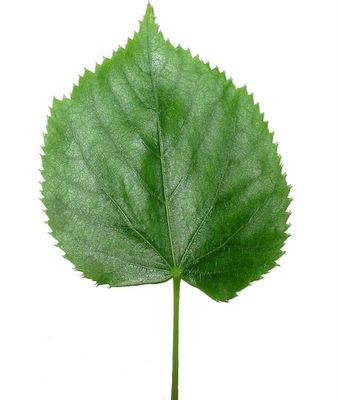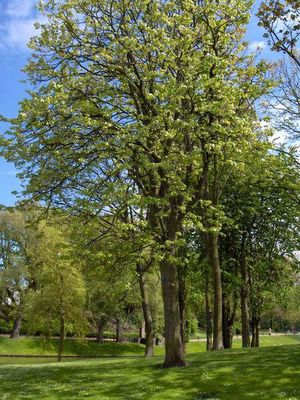
Tilia leaf

The example of a test of leaves was started on October 17 with the collection of 10 yellow fallen and 10 picked green Tilia leaves at Braintree (west of the southern end of New Street and fallen on to a parking lot). After five hours in a plastic bag they were floated in all the recently illustrated buckets and tanks of seawater. A brown set collected on January 30 2001 was dried between newspapers before being similarly tested 26 days later.
The sinking of these leaves in buckets and tanks did not appear to depend on water quality. It involved estimation of times when they sink in the night, or between observations. My method has been to stay up for the first and last sinkings of a set, if sinking looked eminent, and not worry too much if the sinkings around the average had to be roughly estimated. Usually I have studied undried leaves so I was not satisfied with the seven previous Tilia times from dried brown and decayed material. The results for the tree sets are as follows (latest at 15°C):
Brown (7) Av. 6.67 days (range 0.847-10.124)
Yellow (10) Av. 2.1165 days (range 0.811-6.679)
Green (10) Av. 2.178 days (range 1.654-2.694)
The average dimensions of the green set were 85.9 mm by 78.5 mm width on the leaf itself, and 126.8 mm inclusive of the peteole or stem. The largest actually sank fist and had corresponding dimension of 128 mm by 123 mm, and 175 mm total length. The yellow set provides a more natural sampling of the leaf fall and averaged 67.0 mm by 61.8 mm width, with a total length of 96.0 mm. The largest leaf was the last to sink, probably because the peteole was shorter than the penultimate sinking of one with the same overall length of 130 to 131 mm in 3.047 days. These two yellow leaves respectively measured 80 by 68 mm width and 93 by 74 mm width on the leaf itself. Where the leaf was longer on the sides than along the central vein I measured the later, and where damage to the tip had occurred I estimated this length. The damaged leaves actually had averaged times and were relatively small, but the two longer floating yellow leaves did look thinner and paler on the upper surface when finally dried-out.
Incidentally, I am not sure which species this downtown Braintree belongs too. Judging from the larger leaf size, it would be Tilia platyphyllos Scopoli; but the hairs on the lower side of the leaf were confined to vein branches as in the hybrid between it and the Nature north Essex Tilia cordata Miller, termed Common Lime or Tilia x europaea L. In Germany the genus in termed Linden and in eastern North America Basswood. But Linnaeus, probably following the Braintree/Notley resident John Ray, correctly identified it with Tilia of Virgil and Ovid. Presumably the downtown Braintree tree is not old or Native enough for Ray to have studied it himself.

Tilia platyphyllos

No comments:
Post a Comment